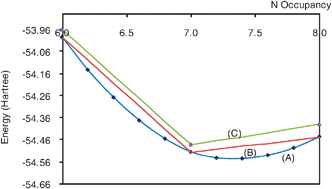Incorrect diatomic dissociation in variational reduced density matrix theory arises from the flawed description of fractionally charged atoms
Abstract
The behaviour of diatomic molecules is examined using the variational second-order density matrix method under the


 Please wait while we load your content...
Please wait while we load your content...